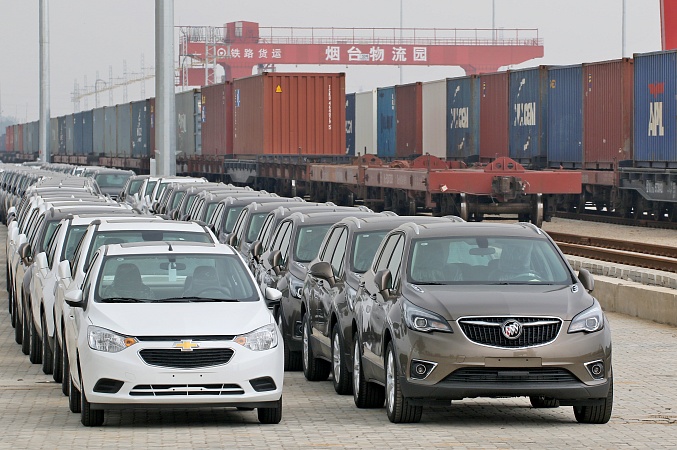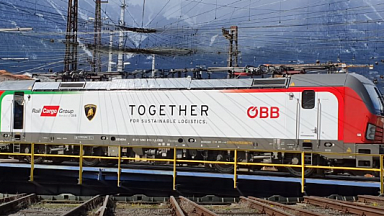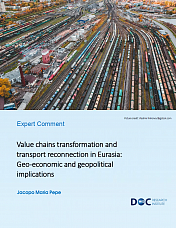The switch to alternatively fuelled cars – as well as the disruptions caused by the Covid pandemic – are leading to a re-think of the way automotive supply chains are designed and managed, including greater use of air freight, regionalisation, and insourcing by OEMs, logistics specialists report.
“The move to electric and driverless is a massive change,” said Dave Dudek, EVP, global automotive and tire sector lead for automotive supply chain specialist CEVA Logistics. And he predicts it will result in greater use of air freight in the long-term.
“Right now, we have never seen so much air freight in the auto industry – due to pandemic disruption, lack of capacity on the ocean and the semi-conductor shortage,” he observed. “This will reduce because it is more expensive, but I do think that as you have more time-critical expensive components in the new electric vehicles, we will see air freight as a mode for some components.”
Changing procurement processes
Dudek said that many OEMs have been changing their procurement processes over the last couple of years and this has been accelerated by the effects of the pandemic.
“Companies are creating multi- and local sourcing activities. They are looking at their supply chains so they have more than one solution in the future,” He noted. “They use multiple geographies so if one place has a problem, they can source from another place. Components are no longer single sourced.”
While many OEMs (Original Equipment Manufacturers) are starting to convert traditional car production plants to be able to produce electric vehicles, there are also many new facilities being established. “We are seeing new players now entering the market and there is a large investment in new production plants from people who have not made vehicles before,” Dudek highlighted.
He said OEMs want to build in the markets which have the largest sales, to avoid the high costs of shipping finished vehicles. “So, we are looking at Europe, the US and China initially and then south-east Asia and later South America and Africa – though the lack of infrastructure of charging points could make it more difficult in developing markets,” Dudek noted.
Lars Krosch, COO of time-critical express logistics specialist time:matters, said: “In Europe, and especially in Germany, new factories for the production of electric vehicles are being built or existing ones are being converted.
“More and more plants for the production of cells, modules and battery packs are being planned and built in Europe – both by European vehicle manufacturers and by third-party companies. The signal is clear: electromobility has established itself and will become more and more important in the next years.”
Driven to air
He also observed that the current problems with ocean shipping are driving more automotive freight into the air. “At the moment the shortage of box containers and sea freight capacity is leading to the fact that even bulk materials – which are high density, high weight and low priced so normally transported in containers – are now being transported by airfreight in order to keep production lines running,” Krosch noted. “Port congestion is another factor in the shift from sea freight to more expensive air freight.”
Krosch does not see the shortage of micro-chips easing in the short-term. “The general move to electric vehicles is shifting the demand from craftmanship based on forming metal to the same demands which the fast-moving consumer goods have,” he said.
“More and more electronic parts are being installed in vehicles. This creates an immense demand for electronic components, which are also used in consumer goods such as mobile phones and game consoles. This leads to a higher demand for microchips.”
He believes that OEMs will bring more of the production of components in-house or at least source from companies located closer to the production plants.
OEMs insourcing
“There are global drivers for OEMs to insource as their vertical range of manufacturing is decreasing,” Krosch noted. “Seats, batteries, charging stations are currently insourced by OEMs to ensure a higher degree of in-house manufacturing with a positive impact on profitability.
“Production plants are being moved closer to the OEMs,” he continued. “There will be more and more regionalisation and insourcing. For instance, EV production in Europe will become very important within the next year. Therefore, the production of the respective batteries will move closer to the automotive production plants – insourcing of technology production through partnership companies.
“We expect that shipment sizes per se will become smaller as large parts are increasingly produced locally. The demand for air freight capacity will increase, particularly in the small parts sector, where high-performance and time-critical transport solutions are required to ensure a stable supply chain.”
Climate change factors
Climate change, which is pushing the move towards electric vehicles, is also creating more volatility in supply chains, with disruptions by severe weather events, for instance.
“This brings the OEMs to think about how to deal with the situation and to adapt to it,” Krosch noted. “The international shipments will decrease in the very long run, with a higher value and a shorter life cycle. The global focus will shift.”
Stuart Stobie, director for emergency logistics specialist Priority Freight, believes that automotive supply chains are not always as global as it might appear.
“Automotive has been quite regionalised in many ways, because the Tier 1 component suppliers sit around the OEMs,” he noted. “North America sources parts from South America. In Europe, everything was historically concentrated in western Europe, but it has been growing in eastern and south west Europe in clusters. And we are getting more electronics from North Africa – coming up by truck.”
But he said that over last two years, from a combustion engine perspective, people are “dipping into the supply chains of other continents when there are problems on their own continent, and then we see more air freight”
“A lot of technology for R&D is coming from the Far East,” Stobie added. “Chinese manufacturers now own European manufacturers and so mix it up a bit more. We were seeing more sea freight of parts from the Far East, but it is almost impossible to find capacity now.”
Stobie believes the supply chain will spread to where the demand is, noting: “It will probably stay mostly in traditional auto manufacturing areas as they still need a skilled workforce and like to have component suppliers nearby.”
He has heard about one manufacturer of electric vans and buses which is building mini gigafactories near towns producing just 20/30 vehicles a week for local consumption. “It is supposed to be a sustainable way of manufacturing cars,” he noted. “A production line takes about a month to build compared with a year for a standard plant.”





